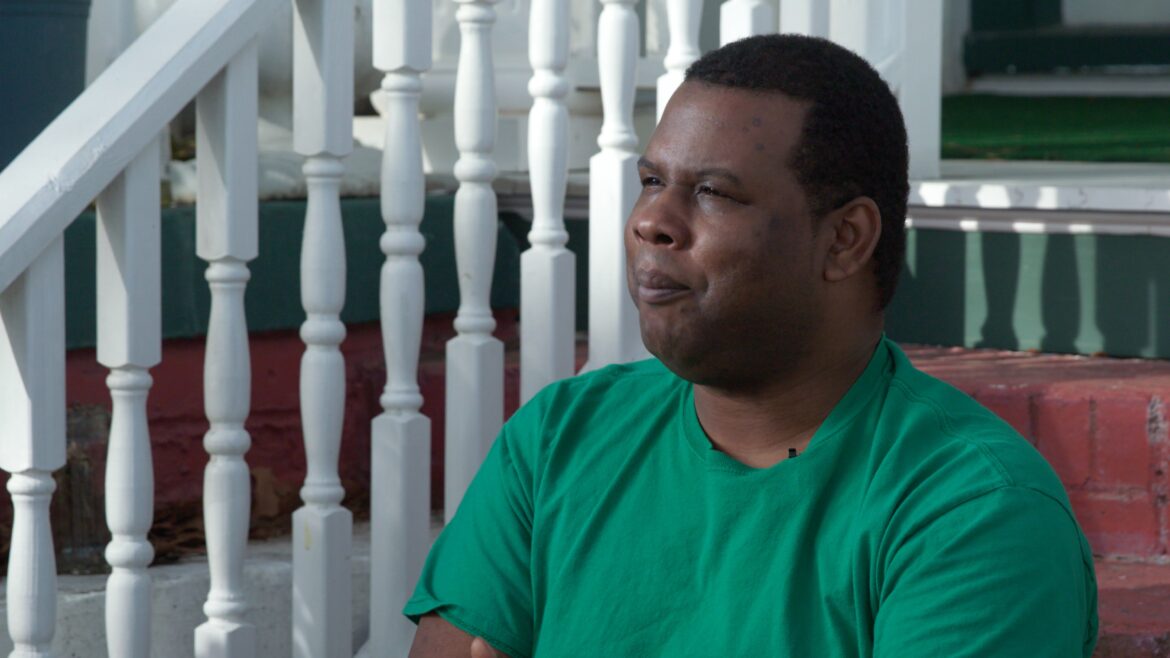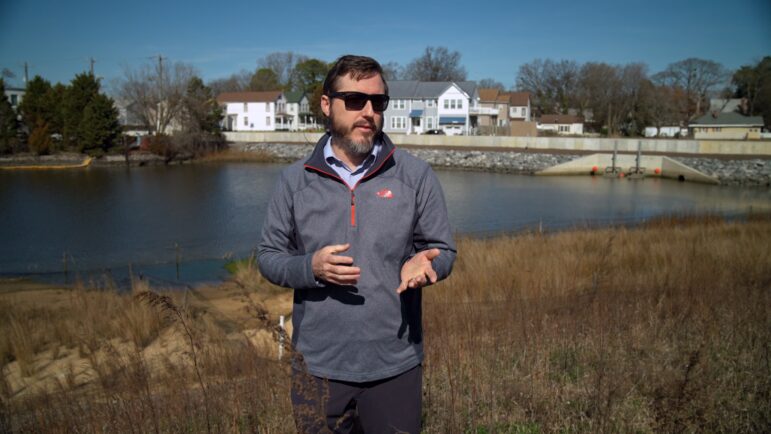Stations partner with ‘Nova’ to tell stories of climate solutions

WHRO
Erik Barrett, a resident of Norfolk, Va., spoke with WHRO for the station's "Nova" project. Barrett's Chesterfield Heights neighborhood, a historically Black community along the Elizabeth River, is seeing the effects of sea-level rise.
From wildfires to floods to high temperatures, many of the stories we hear about climate change focus on the problems it causes. Yet amid the crisis, people in communities most affected by climate change are working to develop creative solutions to stop sea-level rise, shift to renewable energy and take on other challenges.
Nova, which is produced by GBH in Boston, will showcase some of those solutions-driven stories this April with its Climate Across America project. The series will feature two Nova-produced documentaries, Weathering the Future and Chasing Carbon Zero, along with digital and radio content produced by 10 PBS stations.
The stations creating digital content are WKAR in East Lansing, Mich.; WHRO in Norfolk, Va.; Nebraska Public Media; KPBS in San Diego; Rocky Mountain Public Media in Denver; WFSU in Tallahassee, Fla.; Alaska Public Media; Vermont Public; PBS North in Duluth, Minn.; and Northwest Public Broadcasting in Pullman, Wash.
Nova EP Julia Cort said the team aimed to select stations that represented diversity in size and location. “We also wanted to make sure that we were working with stations who really had a dedicated interest in digital, that had some capacity for both digital and production,” Cort said.
Climate Across America follows the model used in 2021 for The Cannabis Question, which explored the impact of marijuana’s changing legal status. Nova EP Chris Schmidt said climate change seemed like a natural fit to continue exploring local effects of national and international issues.
“If you look at that mosaic of all those different examples, you kind of get a picture of the kinds of things globally that people are doing,” Schmidt said. “So it makes sense to have the stations really dispersed as well, because we want to see this variety of experiences and stories.”
Nova has been producing films on climate change for 40 years. Cort said the approach has shifted from explaining climate change to focusing on how people are adapting to it and coming up with creative solutions to mitigate its effects.
“A lot of these solutions do address cutting carbon emissions, but the fundamental truth of where we are with climate change is that it’s going to take a lot of different solutions,” Cort said. “There’s not one or two or three things. There’s probably dozens and dozens of things that will have to be done in order to address the problems.”
The stations creating digital videos for Climate Across America receive greater visibility for their content and guidance from Nova’s team on how to best promote the videos on their websites and social media accounts. Nova will also share station-produced content on its website and social media.
Potential for digital content
WHRO CCO Heather Mazzoni said the Nova projects provide an opportunity for the station’s TV production team and its newsroom, which launched in 2019, to work together in new ways. WHRO journalist Katherine Hafner is creating her first-ever digital video story for Climate Across America, focusing on the impact of sea-level rise in Norfolk.

WHRO’s production department produces local arts-based documentaries and human-interest stories. Collaborating with the newsroom, “the difference for our production team is working in a deadline-driven environment versus getting a perfect shot, shooting several takes of the same subject during an interview, or coming at it from a human-interest angle versus a news story,” Mazzoni said. “I think both teams have a whole new respect for each other.”
WKAR is producing videos on electric vehicles and batteries, drawing on Michigan’s connection to the automobile industry and its efforts to find innovative ways to reduce carbon emissions and move toward renewable energy.
Julie Sochay, WKAR’s senior director of content and communication, said working with Nova’s team on Climate Across America and The Cannabis Question has helped the station advance its digital content strategy and increase viewership on YouTube and Facebook.
“We’ve learned a lot about how to create digital content on an aggressive timeline,” Sochay said. “It’s been very helpful for us to learn how to collaborate internally and with Nova and what kind of potential we have as a station to be able to build out more digital content in the future.”
In addition to producing content in collaboration with Nova, WHRO and WKAR are working with local high-school students on short videos related to climate change. Each station selected three schools and is coordinating production with a teacher or club adviser.
Students submitted pitches that the stations and Nova reviewed and selected to greenlight. Producers from WHRO and WKAR will work with the students to create their videos. Students will learn how to use professional equipment and make the most of their phones’ recording capabilities. Their videos may be published on the Nova Science Studio YouTube channel, and the Nova Science Studio high-school curriculum will be added to the PBS LearningMedia library for use by educators and students.
Cort described the Nova Science Studio curriculum as digital journalism with an emphasis on short-form video and video production. Students working with Nova in the program have produced videos on topics including hunger in America and how artificial intelligence affects mental health treatment.
“The Nova Science Studio curriculum is appropriate for high-school classes or an after-school program to teach science and digital journalism,” Cort said. “It’s being taught now in the high schools that WHRO and WKAR are working with. In the next year, we plan to make the curriculum available to teachers everywhere.”
As the Nova team works with stations on climate stories, they’re taking notes about best practices for communicating across stations and helping participants work together more closely. Cort said she hopes to see more collaborative journalism from stations on their own moving forward.
“What we’re trying to move to is a more decentralized system where we’re really facilitating best practices for stations to communicate with one another,” Cort said. “We want to set up systems for communicating science for stations throughout the system.”
Correction: An earlier version of this article incorrectly said that students’ videos will be shared as part of Climate Across America and added to the PBS LearningMedia library and the Nova Science Studio curriculum for high-school students. Nova has not yet confirmed if and where the student videos will be posted.





